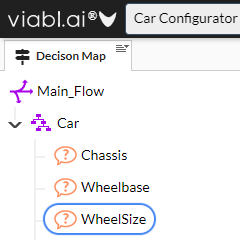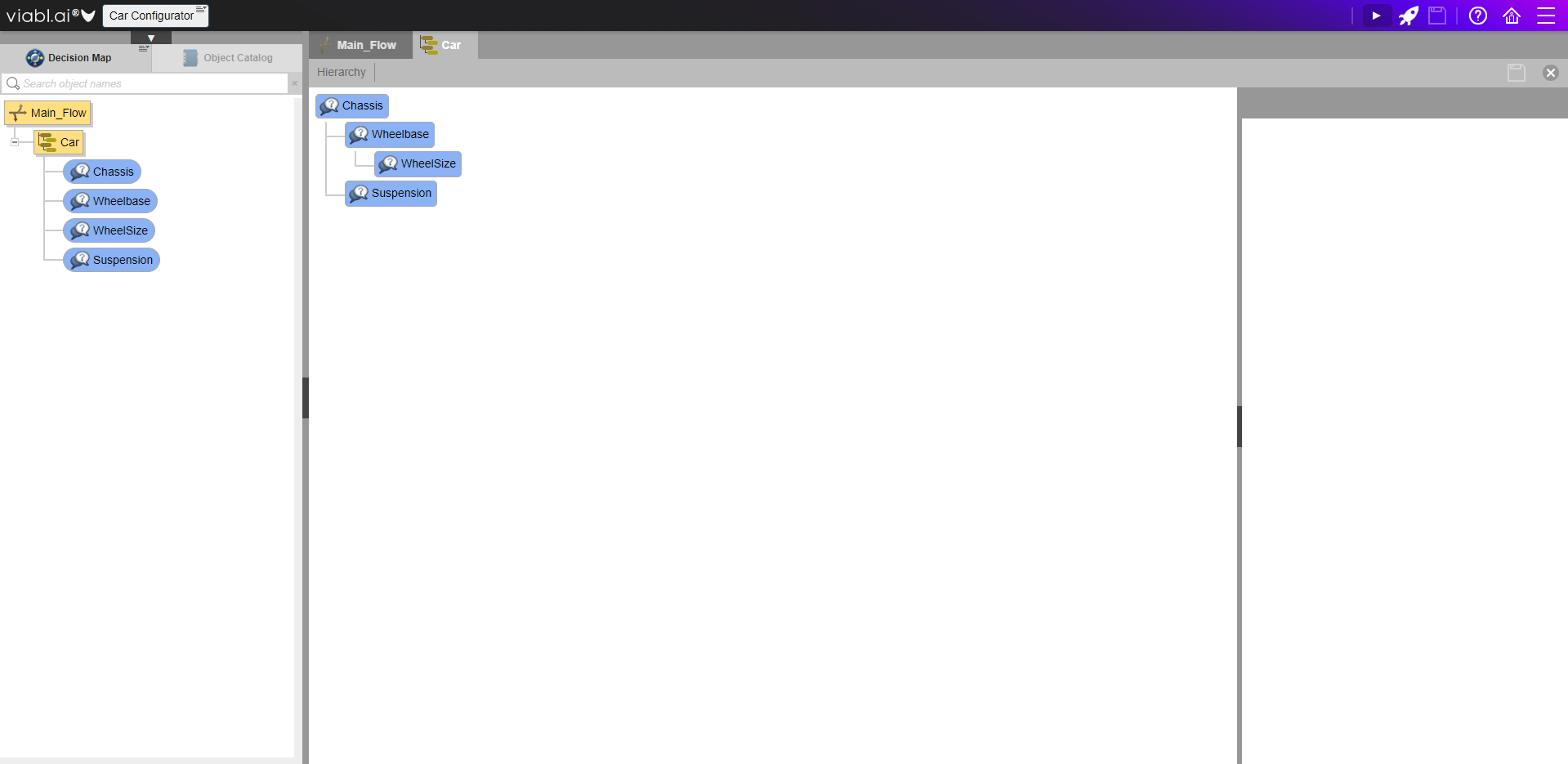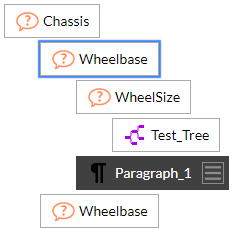Object Hierarchies
A Hierarchy Object enable the developer to define structures showing peer-child relationship of Objects. For example, in a Product Configuration Application it could be used to define a "Bill of Materials" structure of sub-assembly components that make-up a configurable product. In a contract document generation application, it could be used to represent the contract structure - where components in this case represent clauses and sub-clauses of the document.

Hierarchy Editor
Allows numerous nodes to be added through the burger menu and the nodes can be either peers or children of the previous node. The whole Hierarchy will be executed and the hierarchy object itself does not contain a value
Each Variable object added to a Hierarchy can be a Peer or a Child. For each object there is an editor on the right pane which supports two pieces of functionality:
- An exclusion check can be performed and if satisfied, the Children Variable objects will be excluded from inference
- Scripts can be added to be executed on entering and exiting the object
Hierarchy Objects
A Hierarchy object in Viabl.ai should have at least a peer and a child. The objects can be added, removed, or edited via the Hierarchy Editor. Depending on type of the variable object used in the hierarchy will determine which editor will be opened and the object edited directly within.
The objects that can be used are as follows:
- Questions
- Calculated Attributes
- Decision Trees
- Decision Tables
- Decision Flows
- Decision Rules
New questions can be created directly within the Hierarchy, the types of questions that can be used are:
- List
- Numeric
- Boolean
- Dates
- Text
Finally, when adding knowledge, it is possible also to use existing objects, or create new questions directly in the tool when creating this knowledge.

Certain actions can be performed on a Hierarchy object directly from the Decision Map:
- Edit
- Rename
- Run on Server
Paragraph Object
There is a unique object allowed in Hierarchies called Paragraph, these can be added from the burger menu and there are two types:
- A single paragraph object with include/ exclude logic
- Multiple Paragraphs with selection logic
The single paragraph will simply add the text to the paragraph object if that object is encountered in the hierarchy The Multiple paragraph object uses a decision tree to determine which paragraph text will be used. The paragraph outcome is single select. Please see Decision Tree inference to see how Decision Trees are executed.

Inference
Inference is the process by which the Hierarchy is executed at runtime.
Inference executes from top to bottom through the hierarchy and when a peer has a child, the child is executed and all subsequent children until all have been executed. Then the next peer would be executed and so on.
An exclusion check can be performed and if satisfied, the Children Variable objects will be excluded from inference
Scripts can be added to be executed on entering and exiting the object
There are two points at which scripts can be called, prior to object inference and after object inference:
- OnHierarchyEnter - This script is executed when the object is encountered in the hierarchy inference
- OnHierarchyExit - This script is executed when the object has obtained a value (and is not excluded)When an object is a knowledge object, that will be executed in line using standard object inference.

Related Topics
The following is a list of useful topics that can help when using Viabl.ai Hierarchies: